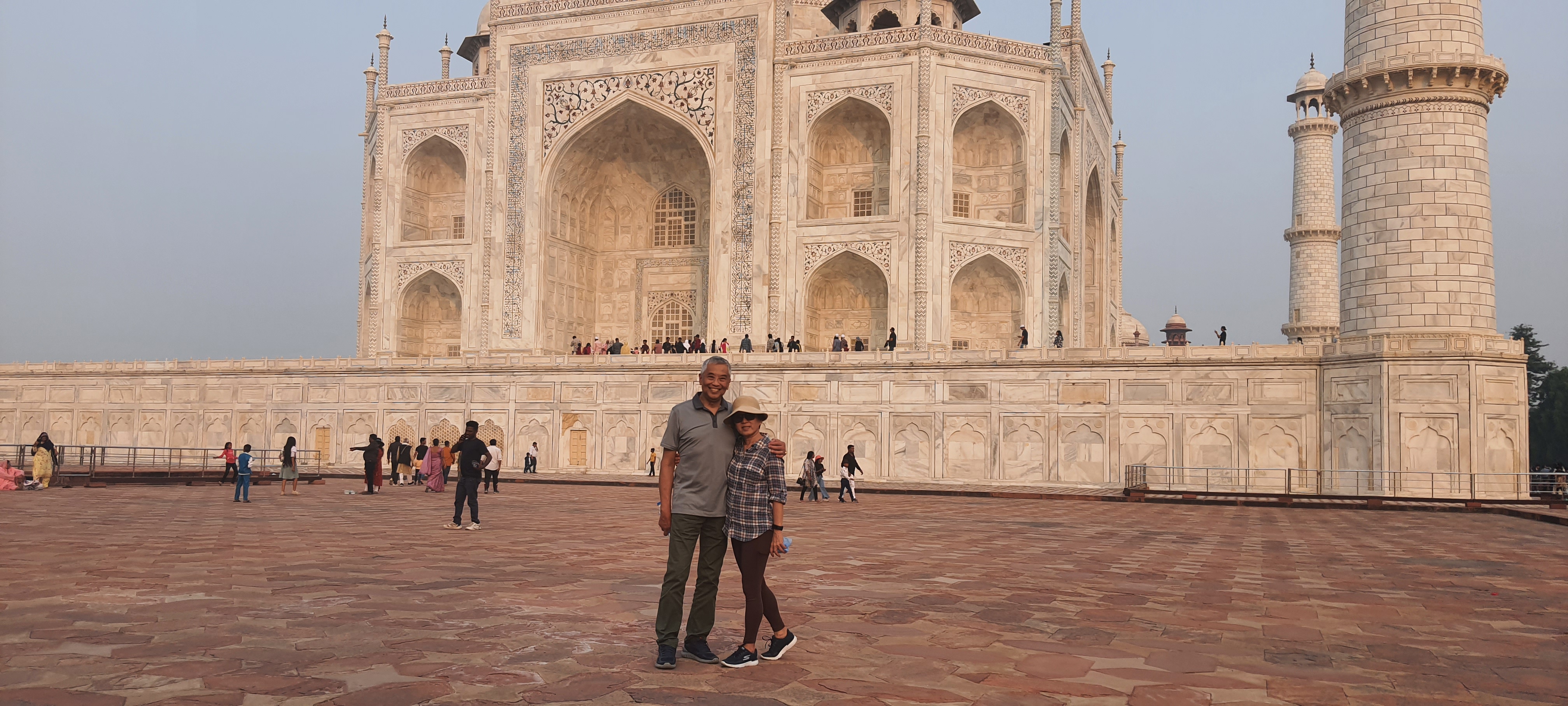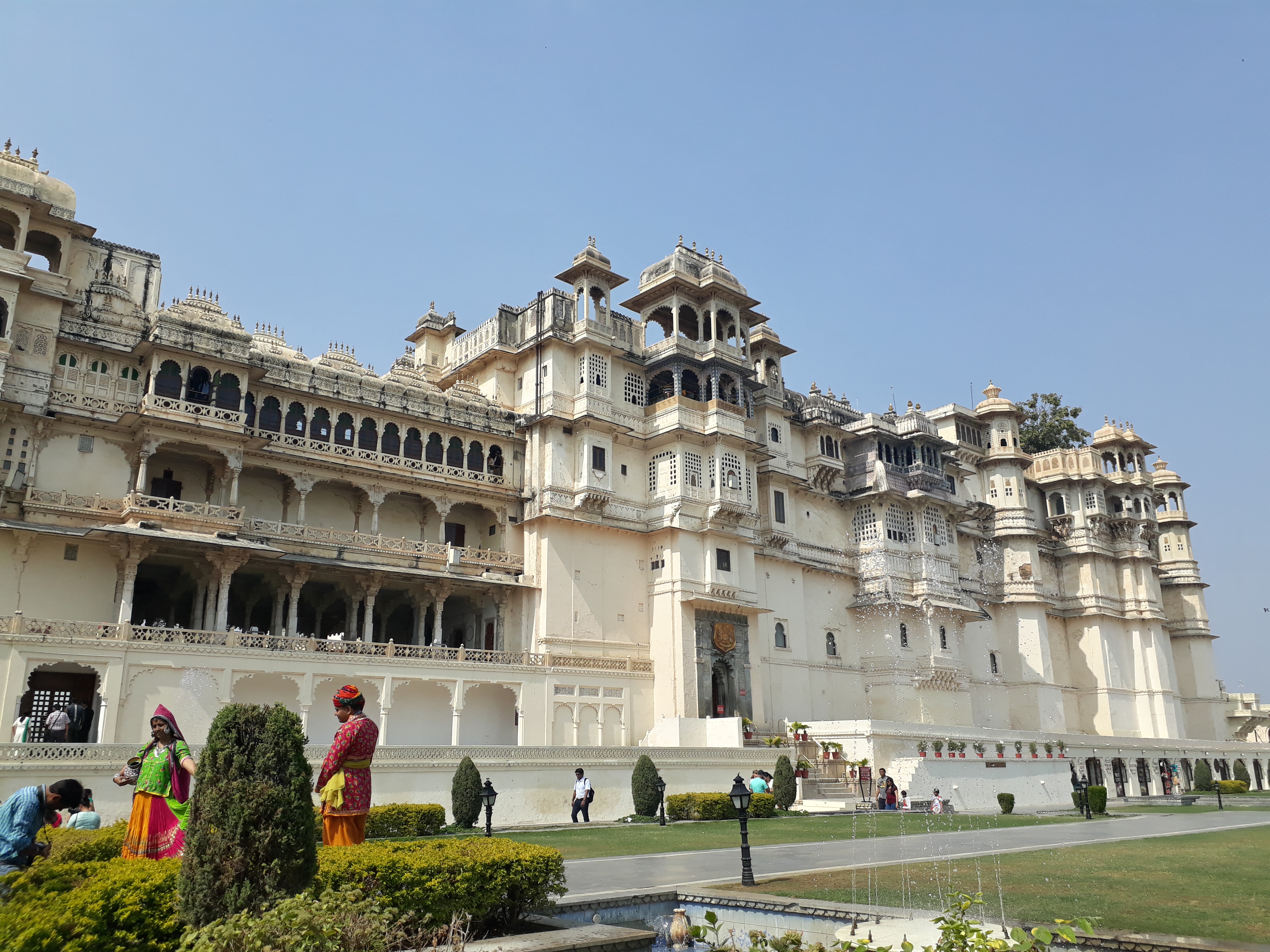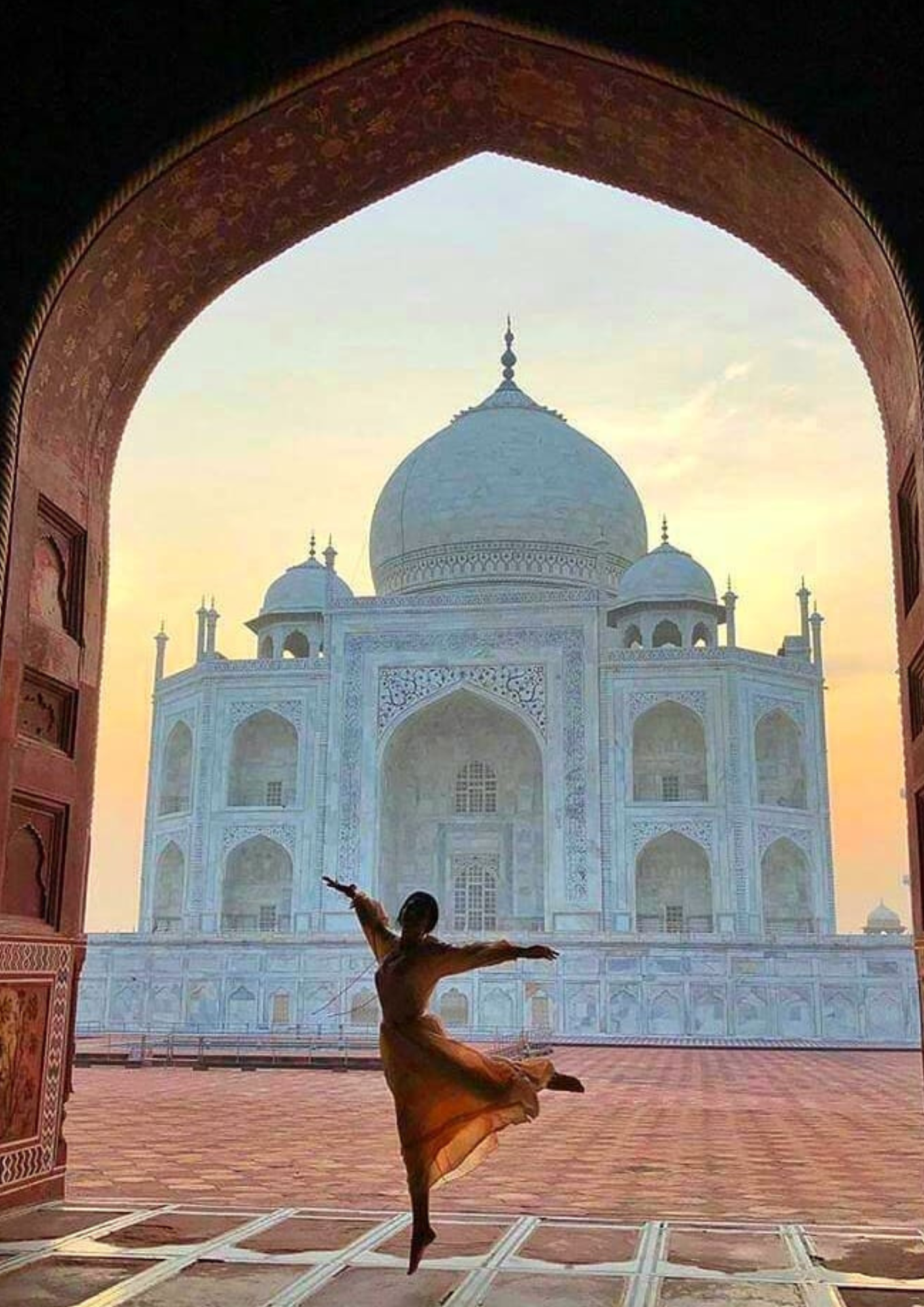Perhaps you’ve already visited India’s capital, once, twice or more, and seen all the major historic monuments and structures: the India Gate, Humayun Tomb, Qutub Minar, and the Red Fort. However, with a history that not only includes the rise and fall of several dynasties, but also the lives of people from different religions and nationalities, there are many more historical remnants in Delhi yet to be explored. So, if you’re looking for a crowd-free and intriguing alternative for delving into the city’s rich and diverse historical and architectural heritage, here’s our rundown of the lesser-known monuments in Delhi, India.
1. Tomb of Adham Khan

Adham Khan, the son of Mughal Emperor Akbar’s wet nurse, was a general in his army. In the 16th century, he was executed for killing Ataga Khan, who held an important position in the Mughal court. Both Adham Khan and his mother were buried in the tomb. It is said that Akbar had commissioned the construction of this tomb, the likes of which had never been seen in any Mughal building of that era. It has an octagonal design built in Lodhi-dynasty style with a verandah on each side. Inside the chamber, there are several passageways, hence it is also called Bul-bulaiyan (a maze or labyrinth). In the 19th century, a British officer had the graves removed to set up his residential apartment, but after his death, the grave of Adham Khan was restored, but that of his mother never found its way back here. Today, the tomb isn’t in the best state, but worth a visit for its unique architecture.
Tomb of Adham Khan
Address: Seth Sarai, Mehrauli, New Delhi, Delhi 110030
Opening hours: 24 hours (daily)
Price: Free entry
Traveler's tips

If you're looking for a quick and inexpensive way to get around, you can use the metro railway, which spans Delhi NCR. Saket Metro Station, for instance, is less than 10 minutes by car from Tomb of Adham Khan and is a great starting point. You'll also find metro stations close to other monuments.
2. Mini Qutub Minar

Taking much inspiration from the design of Qutub Minar, Mini Qutub Minar, otherwise known as Hastsal Minar, was built by Mughal Emperor Shah Jahan in the 17th century. This 55-feet (17 meters) tall tower is nestled in the Hastsal area, which also happened to be one of the hunting lodges of the emperor. After hunting in the surrounding wilderness, Shah Jahan rested in the tower top. The minaret is constructed using Lakhori bricks, and each of its five stories is enclosed by an octagonal ring with red sandstone overhanging eaves. Today, it is crumbling little by little due to lack of conservation and upcoming construction projects, which makes it an essential sight to see before it completely disappears.
Mini Qutub Minar
Address: Hastsal Minar - Deep Enclave, Hastsal Village, Uttam Nagar West, Delhi
Opening hours: 24 hours (daily)
Price: Free entry
3. Qila Rai Pithora

This fortified monument is steeped in history. Constructed by Chahamana king Prithviraj Chauhan in the 12th century, the Qila Rai Pithora housed many rulers of different dynasties through the course of time. As you walk around the complex, you will see the ruins of the fort, along with a statue of Prithviraj Chauhan, who was the last Hindu emperor to sit upon the throne of Delhi.
Qila Rai Pithora
Address: Press Enclave Marg, Near Lado Sarai, New Delhi 110002, India
Opening hours: 7am - 7pm (daily)
Price: Free entry
You might be interested in these Airbnbs!
4. Bade And Chote Khan's Tomb

The South Extension is a popular neighborhood in South Delhi, but there are a few treasures hidden in this part of the city that are unexplored. One such lesser-known gem is the ruins of Bade Khan and Chote Khan’s Tomb located in the crowded alleys of Kotla Mubarakpur area. Dating back to the 16th century, Bade Khan’s tomb reflects Lodhi-era architectural style, complete with octagonal turrets on all four corners and domed-shaped pavilion (chattris) at the top of the turrets. Adjacent to the Bade Khan’s Tomb is Chote Khan’s tomb, which is comparatively smaller in size. A primary feature of this tomb, however, is its well-maintained interior that displays beautiful tile work, while the outer side of the tomb has carved plasterwork.
Bade And Chote Khan's Tomb
Address: South Extension, Opp. Aptech Institute, New Delhi, Delhi 110003
Opening hours: 7:30am - 7pm (daily)
Price: Free entry
New Delhi Tour Guide
Rajeev
I am a full-time licensed tour guide living in Agra, India. I received my Regiinal Level Guide certificate in 2007 from the Ministry of Tourism now I have a Pan India license. Before I discovered the tourism industry, I worked in the law, medical and insurance fields. I have a Bachelor of Science degree, majoring in Biology and Organic Chemistry. After achieving my Masters of Science in Organic Chemistry, I went to law school. My passion for history and culture led me to my profession today. I still enjoy learning science. I use it to understand the healing power of plants: mainly herbs, fruits and vegetables. My hobbies include collecting postage stamps, coins, paper money, reading, music, and of course, gardening. I also love photography, which I have become very good at. Many tourists have enjoyed my personal sightseeing tours. I enjoy meeting people and showing them my world. My lifelong experiences here, combined with my studies, allow me to help people get to know the real India. If you enjoy learning about this way of life, I am the one to come to! I work mainly in Agra, but will create tours to places outside of the city. While my tours are mostly walking tours around the city, I can arrange for transportation as well. If you need accommodation services, I can provide that too. Traveling to India is not just a journey, but an experience!
Tours by Rajeev
New Delhi Tour Guide
Farman Guia Turstico
Hello Travellers people calle me Farman a experienced freelance tour guide. I work with several Free Tours company and we would love to show you around and give you the best tips and recomendations. If you travel in India you will discover a new aspect of this wonderful city. If it is your first visit i warn you one thing: you will fall in love in love with India and you will end up coming back.
Tours by Farman guia turstico
New Delhi Tour Guide
Zeeshan Ali
Namaste!! I Take privilege to share about myself. My name is Zeeshan. I was born and raised in the rich history of India, in the Beautiful City of Agra, I had no Doubts to become a Tour Guide because I couldn't stop myself been attracted towards the charm for History & Architecture of monuments located at Agra from my childhood. I Chose to become a Tour Guide to fulfill my Passion & to learn, share about the Customs, Tradition, Culture, History & Architecture of my Incredible Country which has a Unity in Diversity. I am 34 years old and 14 of them I Dedicated as a Tour Guide. I am Educated, Professional, Sociable, Punctual & friendly. I can interest you by presenting interesting facts about India. I always take into account the wishes of my Clients and create individual plans of Excursion. I help my Clients in choosing the Best Stops, Stores, Cafes & transfers. I did my Masters in Indian History (Medieval Period). I believe my Journey has just begun as I discovered an enormous amount of knowledge of History, Architecture & Culture of North India by reading & Travelling So I am very Well Versed to Deliver the Tour just like a local. I consider myself a Professional in this field, I am happy that my clients take their India Tour Memories as an Experience to Cherish it throughout their lives. In easy words, you can travel with me like an old family friend from India.
5. Jamali Kamali Mosque and Tomb

Dedicated to the memory of Jamali (aka Shaikh Jamali Kamboh), a well-known Sufi mystic in India, and Kamali, who was considered to be linked with Jamali, the Jamali Kamali Mosque and Tomb was established in the 16th century. Built completely in red sandstone, the prayer hall of the mosque features five arches, with the central arch being the largest and most beautifully ornamented. The walls and niches of the religious edifice are also inscribed with verses of the Quran, a religious text of Islam. Next to the mosque is the tomb, which has ornately decorated roofs as well as walls composed of inlaid colored tiles replete with Koranic inscriptions and verses from Jamali’s poems.
Jamali Kamali Mosque and Tomb
Address: Mehrauli Archaeological Park, New Delhi, India
Opening hours: 10am - 6pm (daily)
Price: Free entry
Tip from Trip101 local expert



Jamali Kamali Mosque is located in Mehrauli Archaeological Park, which also boasts the magnificent Qutub Minar Complex in its proximity. A couple of things that amazed me about this area were the lush greenery and the high number of medieval structures that you can find scattered around.
6. Ghalib Ki Haveli

Once home to India’s well-known Urdu poet, Mirza Ghalib, Ghalib Ki Haveli, in the Ballimaran road of Chandni Chowk, is now a heritage site. A tour of the haveli will give you a glimpse into the life and work of Ghalib. There are Ghalib’s hand-written books, translated couplets, letters, and personal belongings on display. Besides, the architecture of the haveli is also truly admirable. The construction is reminiscent of the Mughal era and includes the typical lakhori (kiln-fired) bricks and the overhanging eaves (chhajjas) of Mughal architecture.
Ghalib Ki Haveli
Address: 2469,Gali Captain, Baradari, Balli Maran, Delhi, 110006
Opening hours: Tue - Sun: 10am - 6pm (closed on Mon)
Price: Free entry
Tip from Trip101 local expert

One of the best ways to explore the hidden attractions of Chandni Chowk is by taking an early morning walk through its maze of narrow lanes. For me, embarking on photowalks on its tight streets was an outstanding way to experience the ethos of Old Delhi. After your morning stroll, many street food spots would also open for the day to allow you to savor the delectable flavors of the street.
7. Azim Khan's Tomb

Azim Khan may not be a well-known figure in Indian history today, but he held an important position in the Mughal Army during the time of Akbar’s rule. Mughal emperor Akbar even bestowed him with the title ‘Akbar’, which means 'magnificent’. His mausoleum was built in the 17th century, on a small hillock near Delhi-Gurugram road, and features a crowned dome and carvings reminiscent of the Mughal era.
Azim Khan's Tomb
Address: Sri Aurobindo Marg, Butterfly Park, Qila Rai Pithora, Sainik Farm, New Delhi, Delhi 110030
Opening hours: 8am - 4pm (daily)
Price: Free entry
8. Khirki Mosque

Khirki Mosque is in a dilapidated state today, but its architecture which is a blend of traditional Hindu and Islamic styles speak of a past when it was one of the most prominent religious sanctuaries in medieval Delhi. It was built during the Tughlaq dynasty rule over the Sultanate of Delhi and was also used as a fortress. Unlike other mosques in the country which are circular in design, this place of worship is square-shaped. It is easily accessible from Khirki village near Saket in South Delhi.
Khirki Mosque
Address: A 107, near Khirki Masjid, Malviya Nagar, Delhi 110017
Opening hours: 7am - 7pm (daily)
Price: Free entry
9. Khooni Darwaza

Literally meaning the ‘Gate of Blood’ or 'Bloodstained Door’, Khooni Darwaza is an arch built by the founder of the Suri dynasty, Sher Shah Suri. This arch has witnessed many historic events. During the Mughal era and the great revolt of 1857, the decapitated bodies of many people, including members of royal Mughal families were on display here. This was also the site where many refugees were murdered during the partition of India and Pakistan in 1947. The gate is slowly giving in to dilapidation in the hot sun, but it sure has gory tales of a bygone era to tell.
Khooni Darwaza
Address: Opposite Feroz Shah Kotla, Bahadur Shah Zafar Road, New Delhi, Delhi, India
Opening hours: 24 hours (daily)
Price: Free entry
10. Chor Minar

The forgotten tower of thieves or Chor Minar dates back to the 13th century. It was commissioned by one of the most powerful rulers of the Khilji dynasty, Alauddin Khilji. According to a local legend, the tower had 225 holes where heads of thieves were hanged to instill fear and stop the lawbreakers. The dark past of the structure has long been forgotten, and nowadays, the lawns surrounding the minaret are used by locals for picnicking and relaxing.
Chor Minar
Address: Kharera, 2, Chor Minar Rd, Kaushalya Park, Kausalya Park, Block L, Padmini Enclave, Hauz Khas, New Delhi, Delhi 110016
Opening hours: 24 hours (daily)
Price: Free entry
11. Ghiyath al-Din Tughlaq’s Tomb

Delhi consists of seven smaller cities that were developed by different rulers who reigned over the city at different periods of time. One of the seven historical cities was Tughlaqabad that was founded by Ghiyath al-Din Tughlaq (the founder of Tughlaq dynasty). It is said that Ghiyath built a mausoleum for himself in the 14th century. Built of red sandstone and white marble, it is one of the best-preserved remains of that period. The noteworthy feature of this structure is its outer walls. Instead of vertical walls, the tomb has sloping walls laid down at a 75-degree angle.
Ghiyath al-Din Tughlaq’s Tomb
Address: Fort Main Entrance, opposite Tughlakabad, Tughlakabad, New Delhi, Delhi 110062
Opening hours: 5:30am - 7pm (daily)
Price: Free entry
Explore Delhi's hidden historic gems
Delhi has numerous lesser-known monuments that rarely are talked about. Some of these historic structures are right next to tourist hotspots but still oblivious. Check out our list of the lesser-known monuments in Delhi, India, that are worthy of a visit.
History
Get Trip101 in your inbox
Unsubscribe in one click. See our Privacy Policy for more information on how we use your data






























Create an account to